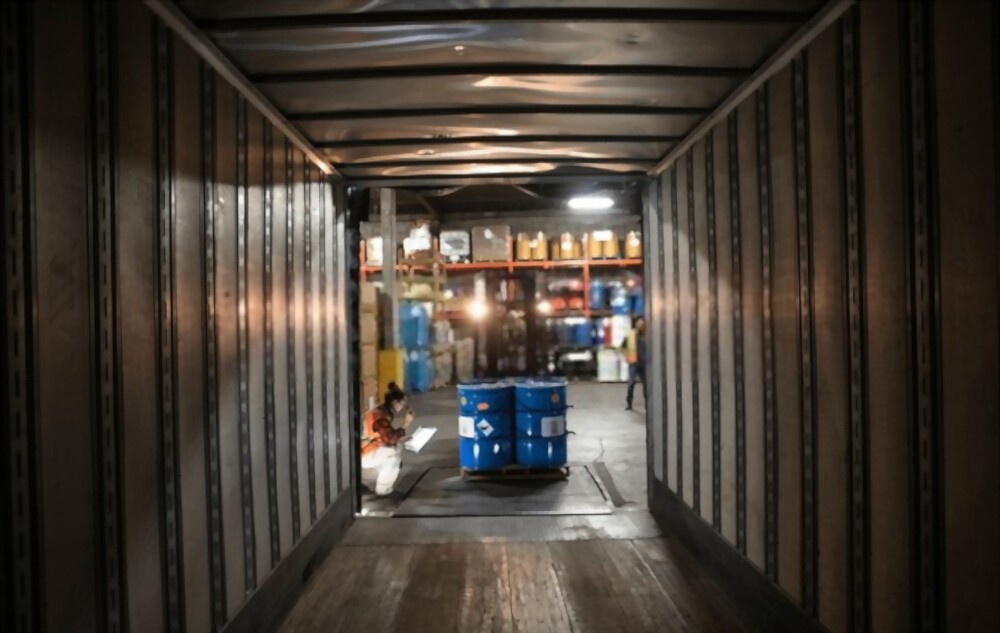As a warehouse manager, it can be a daunting task to ensure that your storage space is being used to its full potential. With the ever-increasing demand for fast and efficient services, optimizing your warehouse is more important than ever. One of the most crucial aspects of maximizing your warehouse space is proper container unloading. Efficient container unloading not only saves time, but it also ensures that your workers are operating in a safe and organized environment.
The proper handling of incoming goods is where the foundation of success begins. Poor container unloading techniques can result in damaged products, inefficient use of space, and lost revenue. From pallets to individual boxes, a strategic unloading process can make a world of difference for your warehouse. Proper organization and space management can increase the efficiency of incoming and outgoing shipments, and ultimately, customer satisfaction.
-
Assess and Analyze Your Current Space Usage
Maximizing Your Warehouse Space with Proper Container Unloading begins with assessing and analyzing your current space usage. This is an integral part of any warehouse management strategy as it helps identify where improvements can be made. By conducting a thorough space analysis, you can determine what areas of your warehouse are being underutilized and what areas are overcrowded. This information allows you to make informed decisions regarding the placement of inventory and the layout of storage systems. Additionally, identifying underutilized space can help reduce rental costs, as it may lead to the consolidation of stocked items and ultimately, more efficient space utilization. Therefore, before implementing any strategies for maximizing your warehouse space, it’s essential to assess and analyze your current space usage.
-
Utilize Automated Unloading Containers
Automated unloading containers are a crucial element in maximizing warehouse space and optimizing operational efficiency. Specifically designed to reduce labor costs, increase productivity, and minimize potential damages, these containers come equipped with advanced technology that streamlines the unloading process. This technology includes automated sensors and conveyor systems that work together to remove the need for manual labor, reducing the time and effort involved in unloading. Additionally, these containers improve safety in the workplace by reducing the risk of workplace accidents or injuries related to manual handling. With the ability to handle larger volumes of goods more quickly and efficiently, automated unloading containers are a game changer in creating a more agile and competitive warehouse environment.
-
Designate Specified Unloading Areas
Designating specified unloading areas is a crucial step to maximize warehouse space and increase efficiency in container unloading. This practice allows for a more organized workflow and helps reduce ambiguity in the unloading process. By allocating designated areas, each container can be systematically and efficiently unloaded, and staff can easily identify the location of each product. Additionally, it is important to ensure that the unloading areas are clear of any obstacles or obstructions that may hinder unloading operations. Overall, designating specified unloading areas is a simple yet effective technique that can greatly contribute to improving the organization and productivity of your warehouse.
-
Implement a System of Labeling and Tracking
In order to make the most of your warehouse space and improve your container unloading process, it is crucial to implement a system of labeling and tracking. This system should include clear labeling of all items and their locations within the warehouse, as well as a reliable tracking mechanism to keep track of inventory levels and potential shortages.
By using a system of labeling and tracking, you can minimize the risk of lost or misplaced inventory, making it easier to fulfill customer orders on time without delay. This system can also help to identify any items that may be overstocked or understocked, allowing you to adjust your storage methods and maximize your available warehouse space.
It is important to ensure that your labeling and tracking system is easy to understand and use, so that all employees can quickly and efficiently locate and manage inventory. By doing so, you can create a more organized and efficient warehouse, ultimately increasing productivity and maximizing your overall space.
-
Regularly Reassess and Optimize Unloading Processes
Regularly reassessing and optimizing unloading processes is a crucial strategy for maximizing your warehouse space. It allows you to identify and address inefficiencies and bottlenecks in your workflow, enabling you to improve overall productivity and use your space more effectively. One effective approach is to analyze the data and information obtained from your daily unloading activities, including the amount of time and resources required to unload each container. This information can then be used to identify areas for improvement, such as streamlining processes, implementing automation, and optimizing staffing levels. Regular assessments and optimizations can also help you stay up-to-date with changes in your business operations, such as shifts in product demand or changes in container sizes. By regularly reassessing and optimizing unloading processes, you can ensure that you are getting the most out of your warehouse space and maximize your productivity and profitability.
In conclusion, optimizing the warehouse layout means not only taking into account the dimensions of the space but also the handling of equipment, products, and containers. Proper container unloading techniques help maximize storage space and improve warehouse operations’ efficiency and productivity while preventing any damage or injury accidents. Any warehouse manager can benefit from implementing proper container unloading procedures to reduce operational costs and improve overall inventory management. With the right tools and knowledge, anyone can transform their warehouse into a well-organized, efficient space that maximizes both space and profits.
